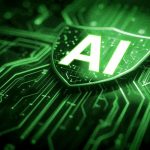As digital innovation accelerates, it brings with it both transformative potential and heightened vulnerability placing cybersecurity professionals and technology leaders in a strategic dilemma. The rise of artificial intelligence (AI) promises automation, efficiency, and insight at scale but integrating AI into existing infrastructure, particularly across hybrid cloud environments, presents real challenges in complexity, control, and risk management.
The Dual Challenge of AI and Hybrid Cloud
Today, many organizations are adopting hybrid cloud strategies to gain agility and scalability by combining private, public, and on-premise infrastructure. However, this distributed model introduces architectural and security challenges. When AI is added to the equation requiring high-performance computing, massive data ingestion, and continuous learning the complexity compounds.
Organizations are increasingly encountering delays in AI deployments due to challenges with data integration and governance across hybrid environments. Data silos, fragmented security controls, and inconsistent policy enforcement continue to limit visibility and control for security teams.
Cybersecurity professionals today operate in an environment where decisions must be made in milliseconds, and infrastructures evolve by the day. In the absence of integrated, real-time intelligence, security teams are often left reacting to threats rather than proactively anticipating them a reactive posture that leaves organizations increasingly vulnerable in a high-speed threat landscape.
This perspective is widely shared among cybersecurity leaders. As highlighted in an ETCIO article, swift threat detection and response is no longer optional it’s a foundational capability for modern security teams operating at digital speed. The article notes:
“The speed of detecting and responding to threats is of the essence. In fact, the clock starts immediately when you identify a potential breach. The longer your response takes, the worse the potential consequences become.”
Source: Evolving Cybersecurity at the Speed of Threats, ET CIO
The Game-Changer: AI Meets Hybrid Cloud
The emerging solution? A seamless convergence of AI and hybrid cloud capabilities. By embedding AI across hybrid architectures, organizations unlock systems that are not only scalable and adaptive, but also self-optimizing and secure by design.
This new paradigm enables:
- Real-time decision-making at the edge
- Automated threat detection and response
- Predictive resource management
- Policy-driven orchestration across environments
Far from being a bolt-on enhancement, AI becomes a foundational layer within the hybrid cloud stack an intelligent fabric that spans compute, storage and network infrastructure.
Real-World Momentum: Who’s Leading the Charge?
Several industry leaders are already seeing the transformative impact of AI-powered hybrid cloud solutions:
- JPMorgan Chase employs artificial intelligence (AI) to bolster its fraud detection capabilities. By integrating AI models across its infrastructure, the bank has achieved lower levels of fraud and improved customer experience, with account validation rejection rates reduced by 15–20%.
Source: J.P. Morgan - BMW Group has adopted a hybrid cloud architecture, leveraging Microsoft Azure and on-premises systems to power its AI-driven manufacturing and logistics. This integration enhances data accessibility, accelerates prototyping and troubleshooting, and elevates development quality.
- Anthem Inc., a leading U.S. healthcare insurer, has modernized its infrastructure by applying AI to automate core processes and using predictive analytics to build a more resilient infrastructure. This approach has corrected 1 million customer issues via dynamic automation, addressed 85% of high-volume issues without human intervention, and reduced high-priority system incidents by 25%, significantly improving system uptime and reliability. IBM – United States
Understanding the Core Concepts
AI-Driven Resource Intelligence
AI optimizes hybrid cloud operations by learning usage patterns, forecasting demand, and dynamically allocating resources. This reduces cost overruns and system downtime, while improving service performance.
BytePlus’s ModelArk platform leverages AI-driven orchestration to optimize AI service deployment. It dynamically routes workloads based on cost-efficiency and resource availability, enabling more intelligent and streamlined cloud operations compared to manual orchestration methods.
Google’s DeepMind applied machine learning algorithms to optimize cooling systems in its data centers. This AI-driven approach resulted in a 40% reduction in energy used for cooling, significantly enhancing the efficiency of Google’s operations. Google DeepMind
Enhanced Security with AI-Powered Resilience
AI augments cybersecurity in hybrid environments by analyzing behavioral patterns and anomaly detection across multiple cloud instances. It enables:
- Zero-trust policy enforcement
- Autonomous response to known and unknown threats
- Continuous compliance monitoring
With machine learning models trained on global threat intelligence and localized context, AI improves threat prioritization and reduces response times.
For instance, IBM’s watsonx platform supports AI-driven threat intelligence across hybrid environments. In collaboration with Red Hat OpenShift, enterprises like Lufthansa and Samsung are enhancing their cloud security posture while maintaining operational agility.
Optimizing Network Performance with AI
Latency and bottlenecks are persistent issues in hybrid architectures. AI mitigates these by:
- Monitoring traffic in real time
- Predicting congestion points
- Automatically rerouting data to optimal paths
This results in improved user experiences, faster data processing, and better uptime. Companies like Netflix rely on AI-assisted hybrid cloud networking to dynamically balance workloads across AWS and custom CDN infrastructure to ensure high streaming quality and service availability.
Seamless AI Integration in Hybrid Cloud Deployment
Deploying AI across hybrid environments requires a consistent operational model. Solutions such as containers and Kubernetes allow AI workloads to be portable, while federated learning ensures data remains local but insights are shared.
Cloud-native platforms like Red Hat OpenShift and IBM watsonx provide unified dashboards for managing AI pipelines, model governance, and lifecycle management across cloud boundaries.

Human Impact: Enabling Smarter Work and Reducing Operational Burden
While the technical advantages of AI-powered hybrid cloud are considerable, the most profound impact is on the people who operate, secure, and manage these systems. This technology is helping cybersecurity and IT teams address some of the most persistent operational challenges:
- Simplifying complex infrastructure management through intelligent automation and unified visibility
- Reducing inefficient resource utilization with predictive scaling and real-time orchestration
- Minimizing security and compliance risks by embedding governance into every layer of the stack
- Addressing data fragmentation and latency with dynamic routing and federated learning
These advancements empower teams to make smarter, faster decisions while dramatically decreasing manual workloads. The result is more resilient operations, improved morale, and greater organizational alignment.
Many cybersecurity leaders report a similar experience: since adopting AI-assisted threat triage, their analysts are able to spend more time strengthening the organization’s overall security posture and less time reacting to a constant stream of alerts. The shift is not only about accelerating decision-making, but also about empowering teams to focus on high-impact priorities that truly enhance security.
Zooming Out: Strategic Momentum and Market Implications
Investor and enterprise interest in AI-integrated hybrid cloud is accelerating. According to IDC, worldwide spending on core IT for generative AI (GenAI) is projected to reach $151.1 billion by 2027, more than doubling from $40.1 billion in 2024. This surge reflects a broader shift toward an “AI everywhere” approach, where hybrid cloud adoption plays a pivotal role in enabling scalable, intelligent infrastructure. Cloud vendors are already competing on AI integration, and enterprises are prioritizing this fusion in boardroom conversations.
Source: IDC
This trend reflects a larger shift: AI is no longer an isolated innovation; it’s a strategic enabler of digital trust, operational resilience, and business agility.
Looking Ahead: A Call to Strategic Action
For cybersecurity professionals and tech executives, now is the time to act decisively. Building a successful AI-powered hybrid cloud strategy requires:
- A unified vision between cybersecurity, IT, and data science
- Strong governance and ethical AI practices
- Investments in infrastructure that supports portability, interoperability, and observability
The convergence of AI and hybrid cloud isn’t just an IT transformation it’s a leadership opportunity. The organizations that embrace this shift will be better equipped to defend against evolving threats, respond faster to market demands, and empower their people to focus on what matters most.
In this new era, intelligent infrastructure is more than a competitive advantage it’s the cornerstone of secure, scalable innovation.
At SISAR, we deliver customized AI security services designed to drive innovation and operational excellence empowering teams to operate smarter and more securely in today’s dynamic landscape.
Ready to move forward? Get in touch with us to explore how we can help you streamline operations, strengthen security, and scale your IT infrastructure with confidence.
Let’s build what’s next – together.







